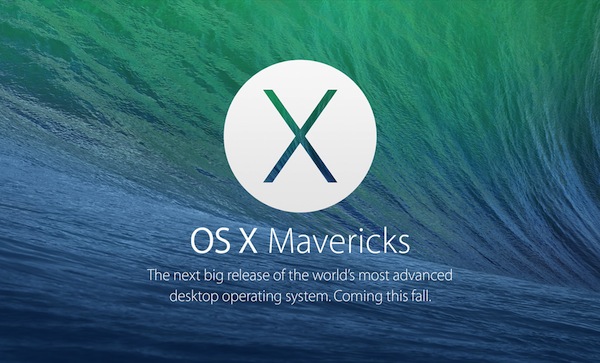

In my writeup earlier of the elements of today’s Apple announcements of interest to news app developers, I mentioned that there was a reference on Apple’s site to the new ability of websites to send push notifications — websites, not just apps. In other words, if big news breaks in your city, your local daily could, with your permission, send an alert directly to your iMac or MacBook Pro — the same way that a news app on your iPhone might send an alert to it. But the site was unclear about what these alerts might look like.
Well, a little birdie gave me some details. Apple will support two kinds of push notifications for OS X Mavericks: OS X Website Push Notifications and Local Notifications.
Local notifications are built on a web standard and require (a) some JavaScript and (b) the website in question being open on your computer. So if you have NYTimes.com open in a tab and there’s a big story, the Times could push a notification to the desktop. That’s not new; Chrome and Safari (and maybe more) have supported that for some time, and Apple currently supports it in Snow Leopard.
But having to keep the news site open in a tab is an obvious limitation.
The new model — OS X Website Push Notifications — is more promising, even if they’ll be limited only to Macs (not iOS, not Windows, not Android). From Apple’s documentation:
In OS X v10.9 and later, you can dispatch OS X Website Push Notifications from your web server directly to OS X users by using the Apple Push Notification service (APNs). Not to be confused with local notifications, push notifications can reach your users regardless of whether your website or their web browser is open…
To integrate push notifications in your website, you first present an interface that allows the user to opt in to receive notifications. If the user consents, Safari contacts your website requesting its credentials in the form of a file called a push package. The push package also contains notification assets used throughout OS X and data used to communicate to a web service you configure. If the push package is valid, you receive a unique identifier for the user on the device known as a device token. The user receives the notification when you send the combination of this device token and your message, or payload, to APNs.
Upon receiving the notification, the user can click on it to open a webpage of your choosing in the user’s default browser.
Note: If you need a refresher on APNs, read the “Apple Push Notification Service” chapter in Local and Push Notification Programming Guide. Although the document is specific to iOS and OS X push notifications, paradigms of the push notification service still apply.
So it seems like a process similar to the one used to send regular ol’ iPhone push notifications. That probably makes it beyond the technical level of your average blogger to set up him or herself. But there are push providers like Push IO who will probably be able to serve them up, at pretty reasonable prices.
And untying it from app development (still too costly or not useful for many publishers) could open up a new, more granular kind of alert:
— See, I’d let The Times-Picayune alert me if a New Orleans Saints player gets injured.
— I’d let The Dallas Morning News alert me if there’s a front-page education story.
— I’d let The Verge alert me when they publish another one of their long features.
— I’d let FiveThirtyEight alert me whenever Nate Silver publishes a post within the last two months of a presidential campaign.
— I’d let New York magazine alert me whenever Vanessa Grigoriadis writes a feature.
— I’d let HitFix alert me when Alan Sepinwall writes a new Mad Men recap.
My point is that what I want from alerts is granularity — a little bit from here, a little bit from there, tied to my interests. The New York Times, for instance, used to send out news alerts about both issues of major national and international import…and maneuverings in the New York state senate. I don’t care about the New York state senate. But there was no good way to tell the Times that — it was all or nothing.
There are lots of reasons that granularity is hard to get — primary among them the fact that most news orgs don’t have the kind of story metadata, user behavior data, or tech chops to be able to connect specific kinds of content to specific users. But one big reason why is that push notifications have been primarily tied to apps — these big, undifferentiated piles of content lying behind a single icon. Even when news organizations have good metadata on their content, it’s unlikely that level of information carries over into the app’s packaging.
Moving push notifications usably to websites — while keeping them persistent even when the website isn’t loaded on a computer — aligns the delivery mechanism with where the technology assets are, the web.
Realistically, this dream has no real chance of success if it’s limited to just the newest version of Mac OS X. It’s a small slice of the news-consuming market, and one that will only get smaller as mobile devices continue their surge. But Apple’s announcement today is a small, incremental step toward an alert system that is more useful, more customizable, and better at connecting news to readers.
Effective, useful push has been a dream for a long time. This might take us a half-step closer.